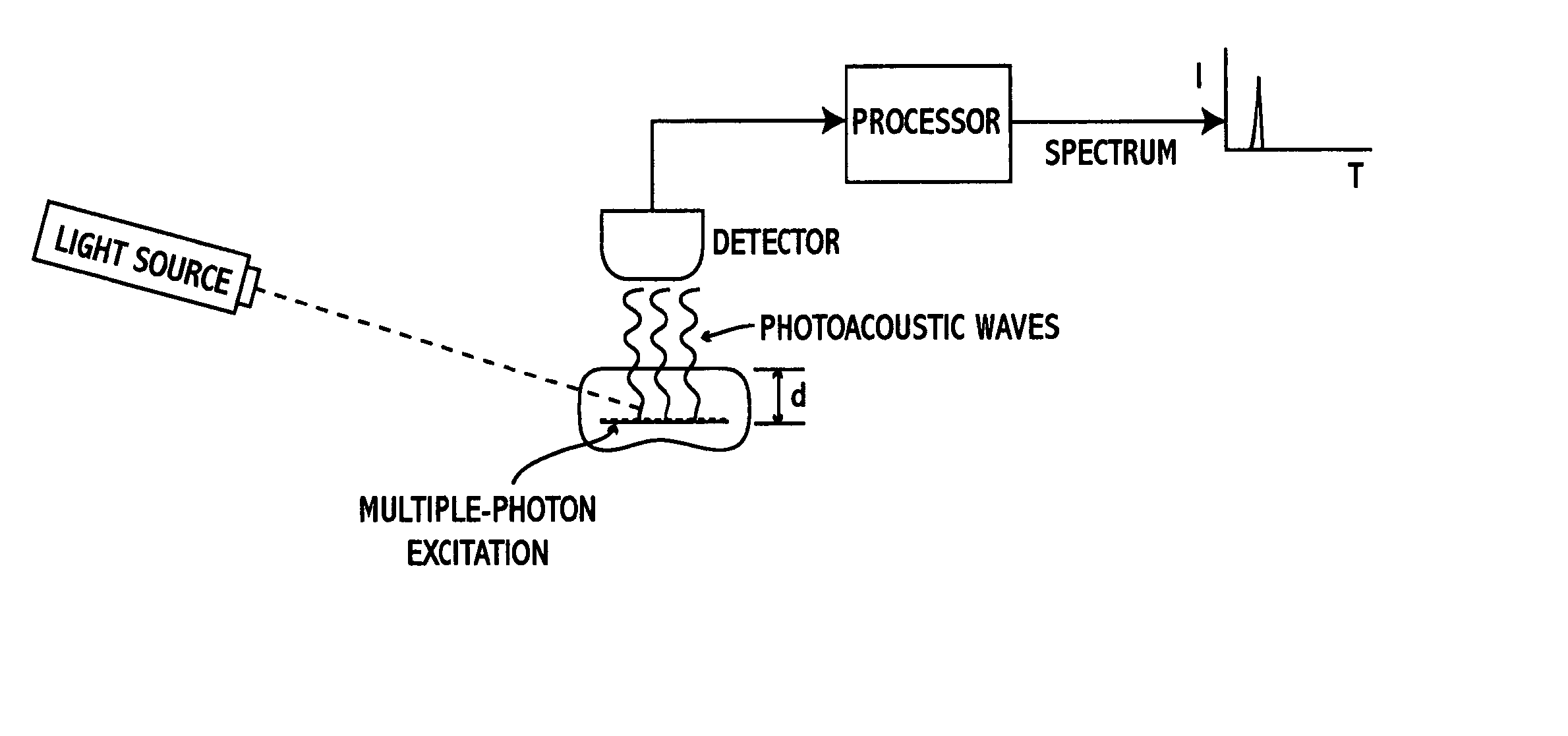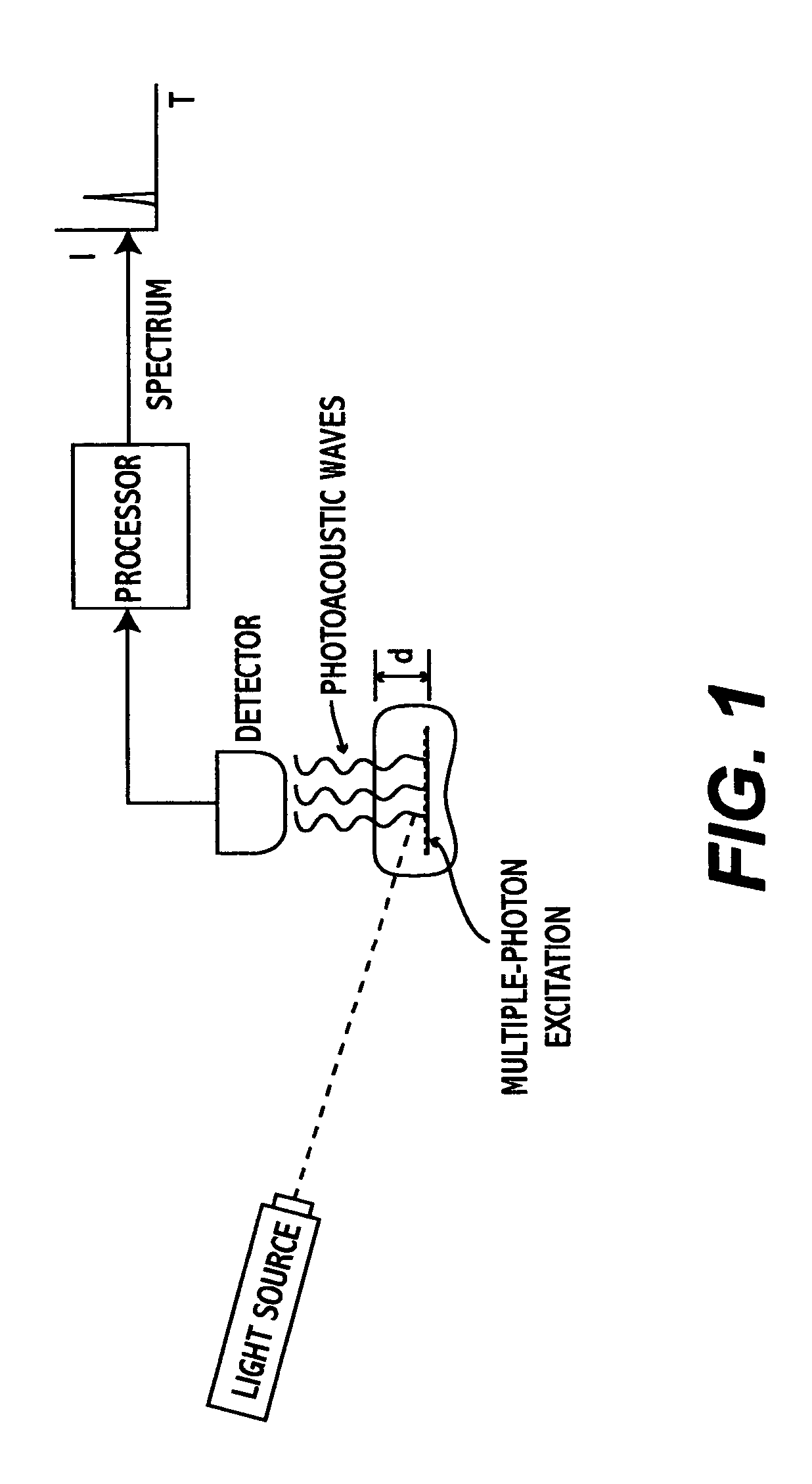Multiphoton photoacoustic spectroscopy system and method
a multi-photon and photoacoustic spectroscopy technology, applied in the field of medical imaging techniques, can solve the problems of limited diagnosis, limited application of chemical-based techniques for tumor diagnosis, and certain conditions that cannot accurately distinguish between dense healthy tissues and tumorous tissues. , to achieve the effect of non-invasive diagnosis
- Summary
- Abstract
- Description
- Claims
- Application Information
AI Technical Summary
Benefits of technology
Problems solved by technology
Method used
Image
Examples
Embodiment Construction
[0022]FIG. 1 shows a system for performing multiphoton photoacoustic spectroscopy (MPPAS) in accordance with one embodiment of the present invention. The system includes a light source 1, a detector 2, and a processor 3 which may be any type of general-purpose or specialized (e.g., ASIC or other chip-based) computing system. The light source is preferably a tunable high-power laser which generates a light beam within a predetermined range of wavelengths towards a specimen 5 to be analyzed. The wavelength range, laser power, or a combination of these or other parameters (e.g., objective lens power) may be selected to achieve a desired penetration depth for purposes of inducing multiple-photon excitation in the specimen accordance with the present invention, as described in greater detail below.
[0023] The detector maybe any type of transducer capable of sensing acoustic waves and converting them into electric signals. One example is a piezoelectric transducer (PZT) but those skilled ...
PUM
 Login to View More
Login to View More Abstract
Description
Claims
Application Information
 Login to View More
Login to View More - R&D
- Intellectual Property
- Life Sciences
- Materials
- Tech Scout
- Unparalleled Data Quality
- Higher Quality Content
- 60% Fewer Hallucinations
Browse by: Latest US Patents, China's latest patents, Technical Efficacy Thesaurus, Application Domain, Technology Topic, Popular Technical Reports.
© 2025 PatSnap. All rights reserved.Legal|Privacy policy|Modern Slavery Act Transparency Statement|Sitemap|About US| Contact US: help@patsnap.com



